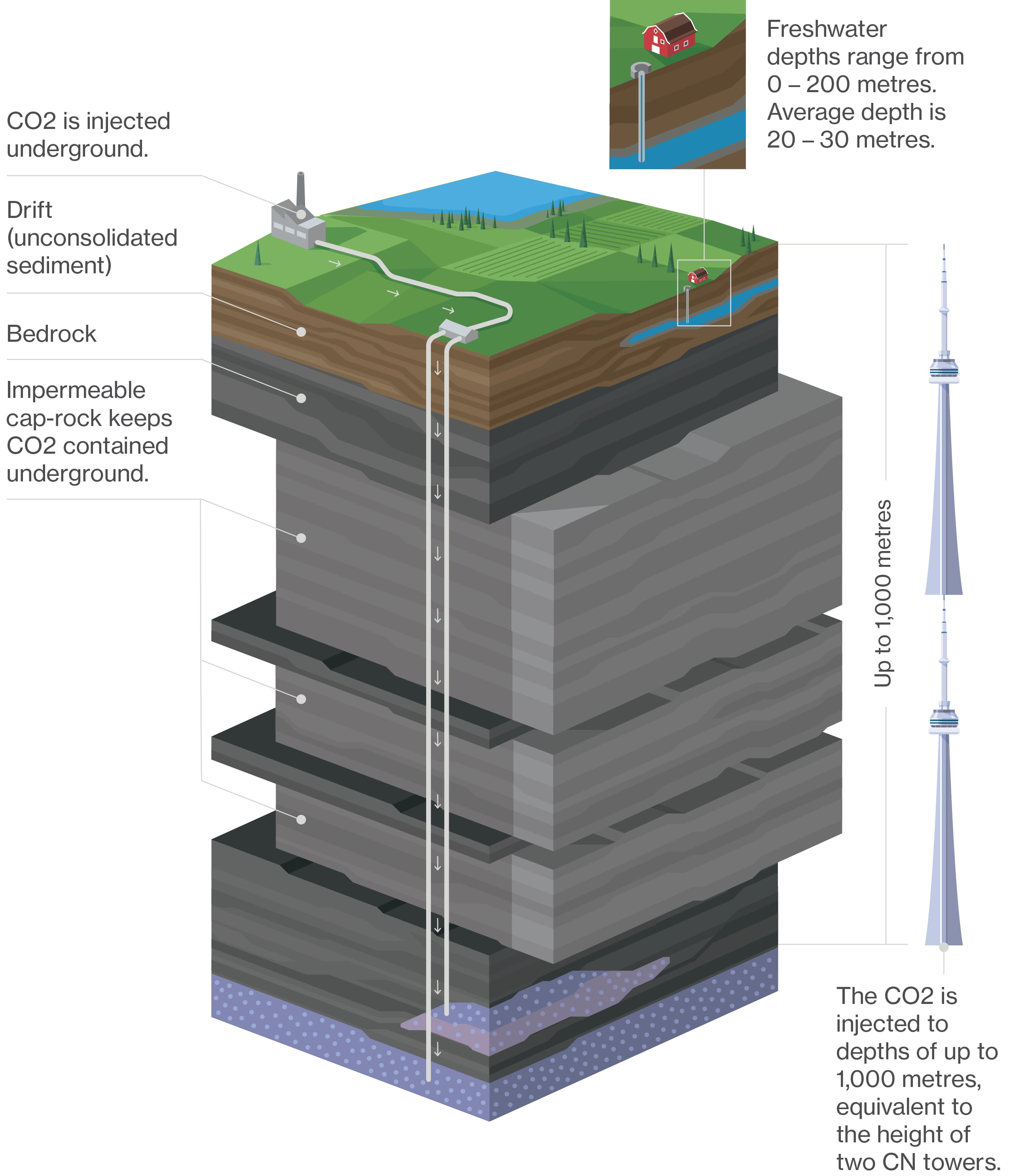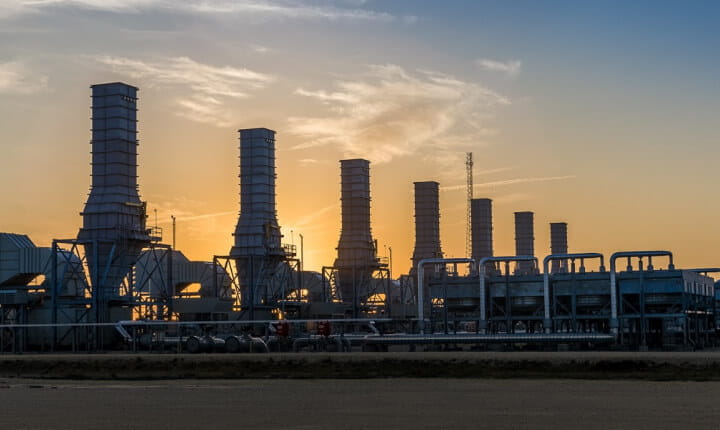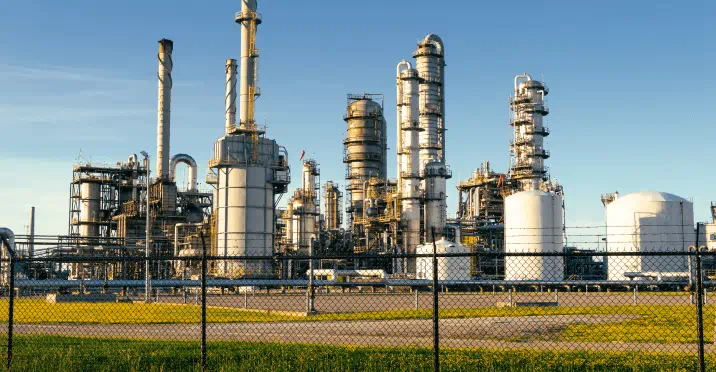Capturing emissions and securing them underground
For power plants and essential industrial processes such as cement and steel manufacturing, carbon capture and storage (CCS) also known as carbon capture utilization and sequestration (CCUS) is an important technology to capture carbon dioxide (CO2) emissions from a point source and sequester or store it deep underground.
The International Energy Agency calls CCS one of the world’s most critical decarbonization technologies1 to help achieve net zero by 2050. Resources will be needed for pilot projects and infrastructure development to allow Ontario to scale up CCS to its maximum potential.
Visit our virtual open house
Discover the essentials of carbon capture and storage in Ontario - what it is, how it works, and the opportunities it creates for a more sustainable future.

How carbon capture and sequestration works
CCS is not a new or emerging technology. Western Canada is a leader in CCS, with decades of experience and projects already operating in Saskatchewan, Alberta and British Columbia. The technical expertise and legal, regulatory and policy frameworks necessary could be readily adopted in Ontario.
Ways to capture and use CO2
- Carbon dioxide is captured from an industrial facility, power plant or directly from the air.
- Large scale capture and sequestration: The CO2 is concentrated, compressed and transported to a sequestration site (by pipeline, rail, truck or ship), and pumped deep underground into a porous geologic formation, which keeps the CO2 trapped underground.
- Smaller scale capture and conversion: The CO2 is captured and converted from a gas to a stable solid, like sodium carbonate (soda ash), that can have other uses and benefits including surplus heat that can a) offset energy demand and b) make pharmaceuticals, glass and soap.

Learn more about carbon capture
- See how the Open Access Wabamun Carbon Hub Enbridge is developing in Alberta will support near-term carbon capture projects.

Ontario’s potential savings and opportunities
- A preliminary study by the Ontario Ministry of Natural Resources showed that up to 730 megatonnes of CO2 could potentially be stored in a deep saline aquifer located in southern Ontario4.
- Canada is investing $319 million3 over seven years into research and development of CCS technologies.
- An October 2023 report by the Canadian Centre for Economic Analysis (CANCEA) shows that a diversified scenario investment, totaling up to $95 billion in low carbon hydrogen and CCS, is expected to support over $218.8 billion in economic activity and 1.2 million job-years (over 44,000 jobs annually) from 2024 to 2050. View the report by visiting the CANCEA website.

Moving forward together
- The Government of Ontario has made amendments to the Oil, Gas and Salt Resources Act to facilitate Special Projects to evaluate carbon capture and sequestration in Ontario.
- This would allow the required testing and evaluation to move forward, while also enabling private-sector investment for made-in-Ontario CCS solutions.
- In May 2025 the Government of Ontario re-introduced the Geologic Carbon Storage Act, 2025 and the Bill is moving through the legislative process.











